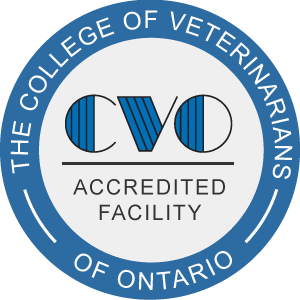Illustrated Articles
-
There are six primary reasons for vaccination failure. Vaccine inactivation is one reason and is most commonly caused by warming during shipping and handling. In addition, vaccines are not always 100% effective. Dogs may also be unhealthy or too young, leading to vaccine failure. Interference by maternal antibodies can lead to the vaccine being blocked.
-
Vaginitis refers to inflammation of the vagina and can be a result of several possible underlying causes. Prognosis is generally good, especially if the underlying cause is identified and treated early. The most common clinical signs of vaginitis include increased frequency of urination, licking of the vaginal area, vaginal discharges, and scooting or rubbing of the vaginal area. Diagnostic testing to determine the cause of a dog's condition is helpful in identifying the appropriate antibiotic treatment.
-
Vascular tumors of the skin develop from the blood vessels of the skin. These tumors may arise anywhere on the body and appear as a firm and raised lump on or under the skin. Hemangiomas may ulcerate and bleed; hemangiosarcomas may bleed into the surrounding tissues. This type of tumor is typically diagnosed via a tissue biopsy or surgical removal of the entire tumor. Surgery is the recommended treatment for vascular tumors of the skin.
-
Visceral vascular tumors are tumors which arise from blood vessels. The main tumor types are hemangiosarcomas (cancerous) and hemangiomas (benign). The clinical signs vary depending on the location of the tumor. Surgery is the recommended treatment option. Given the highly metastatic nature of hemangiosarcoma, chemotherapy is also recommended.
-
The Vizsla is a Hungarian pointer, utilized by the Magyar nomadic tribe along with their falcons, to hunt birds and track game. They need a lot of vigorous activity, but as long as they get it, they are gentle enough to lie quietly by Grandpa's feet as he snoozes.
-
Vomiting is the forceful evacuation of stomach contents. It is a clinical sign of a disease. Most cases of acute vomiting resolve quickly with simple treatment, without the underlying cause being diagnosed. Any required tests are determined based on physical examination of your pet and the signs your dog has been displaying at home.
-
Von Willebrand’s disease is a bleeding disorder that results from the lack of von Willebrand factor (vWF), a protein needed to help platelets clump together and seal broken blood vessels. Affected dogs have varying amounts of vWF. Doberman Pinschers are the most common breed affected but they are mildly affected compared to Scottish terriers and Chesapeake Bay retrievers. Dogs can develop bleeding at any time in their life. Certain drugs that interfere with platelet function should be avoided in affected dogs. Treatment of severely affected dogs requires a blood or plasma transfusion. Screening of breeding animals is recommended to reduce the incidence of the disease.
-
Vulvoplasty, also known as episioplasty, is a surgical procedure that your veterinarian may recommend to correct a conformational issue known as a recessed vulva. Your veterinarian will remove a crescent-shaped piece of tissue from above the vulva, allowing the skin to be pulled upwards into a more normal conformation. This procedure is performed under general anesthesia. Your pet will be intubated with an endotracheal tube. After surgery, you will need to give pain medications and antibiotics as directed and keep your dog confined/restricted for approximately two weeks. Skin sutures, if used, can typically be removed 10-14 days after surgery.
-
The streamlined, steel-gray Weimaraner (Weim) was bred to sustain long hours of hunting birds and even large animals. A great companion for runners or agility enthusiasts, the Weim is ready for any physical activity.
-
The Welsh Springer is a hunter at heart, and thrives on days spent in the field. But he's equally at home playing with the kids or snoozing by the fire. He's an easygoing, affectionate fellow that is more of a one-family dog than are most spaniels, steady with his family but aloof, even a bit shy, around strangers.


